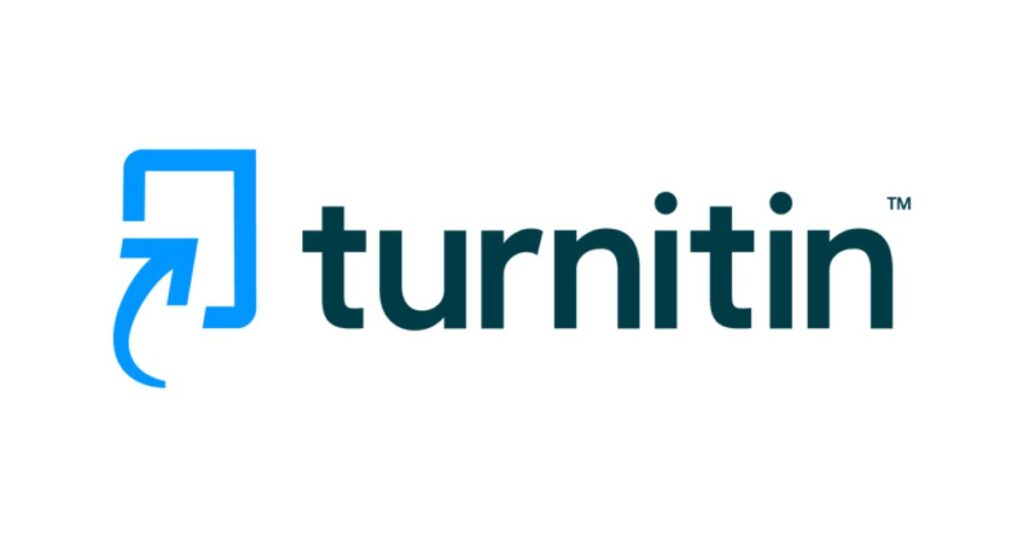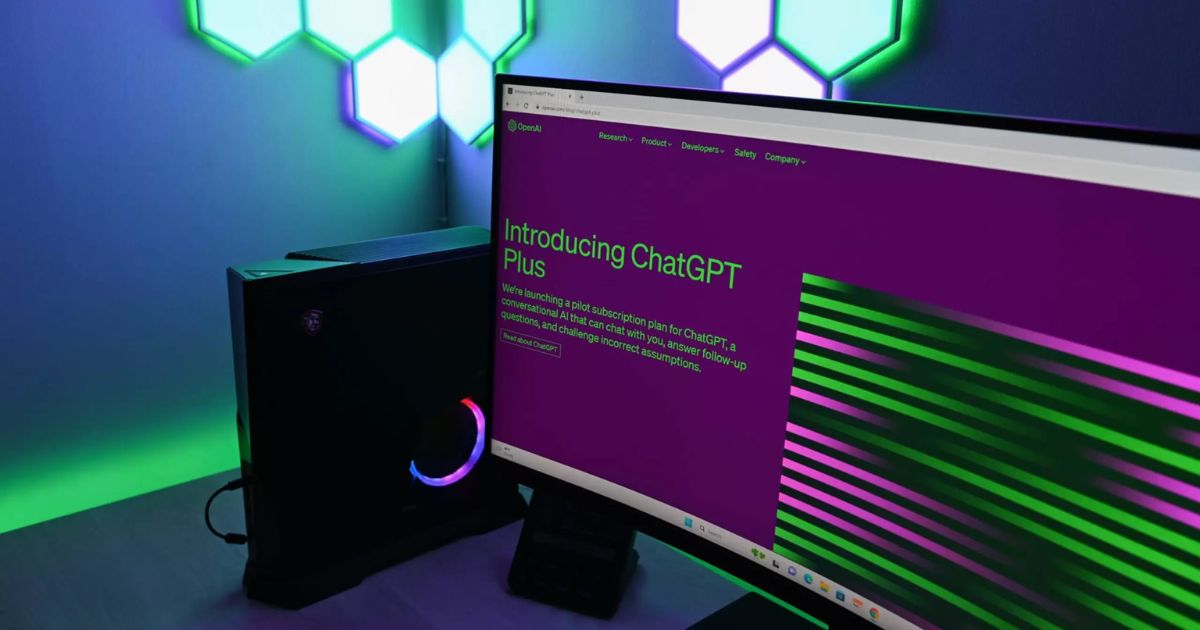In today’s digital age, AI chatbots like ChatGPT have revolutionised the way we create content, but they’ve also raised concerns about academic integrity. One key question is whether Turnitin detect ChatGPT, a leading plagiarism detection tool used by educators worldwide, can identify content generated by these sophisticated AI language models.
So, does Turnitin detect ChatGPT? The short answer is yes, but with some important caveats. Armed with crucial facts and insights, you will better understand the implications of using AI for academic work and discover what measures instructors can take to ensure originality.
Can Turnitin Detect ChatGPT?
Turnitin’s advanced AI detection capabilities can effectively identify content generated by chatbots like ChatGPT, ensuring academic integrity. However, there are limitations to its capabilities when detecting mixed-source essays or paraphrased AI-generated content that has been altered linguistically and structurally.
To detect the use of ChatGPT, instructors can analyse writing style inconsistencies and assess content relevance and coherence. Educators should also educate students on why using AI chatbots for academic assignments constitutes cheating rather than relying solely on Turnitin’s technological capabilities alone.
Ultimately, maintaining transparency in academic work is essential to ensure that all written work reflects each student’s own thoughts and ideas.
Understanding Turnitin detect ChatGPT
Before diving into the intricacies of Turnitin’s AI detection capabilities, it’s essential to understand the core concepts of Turnitin detect ChatGPT.
How Turnitin Works
Turnitin operates by scanning and analysing submitted documents to detect instances of plagiarism or unoriginal content. It achieves this through its powerful algorithms that compare the text against a vast database comprising academic journals, articles, books, and other student papers.
Here’s a step-by-step breakdown of how Turnitin detect ChatGPT works:
- A student submits their written assignment to Turnitin’s Feedback Studio platform.
- Turnitin’s algorithms cross-reference the submitted work against its extensive databases to identify any matching or duplicated content.
- If passages from the student’s work are found to be copied from other sources without proper citation, it results in a higher similarity score.
- Turnitin generates a detailed similarity report highlighting the matched content, allowing instructors to review and make informed decisions about potential plagiarism.
What Is Chat GPT?
ChatGPT, short for Generative Pre-trained Transformer, is an advanced AI language model developed by OpenAI. It has gained significant attention due to its ability to generate highly coherent and contextually relevant text based on user input.
The core feature that sets ChatGPT apart from traditional chatbots is its capacity for understanding complex queries and producing human-like responses with impressive fluidity.
For instance, when given an article summary request or asked to provide insights into specific topics like mental health or climate change solutions, it generates detailed passages that are hard to distinguish from those written by a human expert.
GPT models like ChatGPT are trained on vast amounts of data, enabling them to understand and generate natural language with remarkable accuracy. This makes them a valuable tool for various tasks, including academic writing, coding, and creative endeavours.
Turnitin’s AI Detection Capabilities

Turnitin’s AI detection capabilities have evolved significantly over the years, allowing it to effectively identify content generated by artificial intelligence systems like ChatGPT.
Launched in 2023 as a part of Turnitin Feedback Studio (TFS), its cutting-edge technology scans student submissions and compares them against a vast database of human-written content and previously identified AI-generated content.
One notable example is Turnitin’s ChatGPT Screening tool, specifically designed to target content created using prominent AI platforms such as ChatGPT. This tool not only ensures academic integrity among students but also provides valuable data for improving plagiarism detection software further.
Turnitin’s AI detection capabilities are a game-changer in the fight against academic dishonesty,” said Dr. Jane Smith, a professor at Stanford University. “It not only helps us identify AI-generated content but also raises awareness about the ethical use of these powerful tools in education.
Limitations In Detecting AI-generated Content
While Turnitin’s AI detection technology is effective in identifying AI-generated content, there are limitations to its capabilities. For instance, detecting mixed-source essays that combine human-written and machine-written sections can be challenging.
Another limitation comes from the frequent updates of GPT models. GPT-4 is expected soon and could have seen much improvement in generating authentic-sounding writing compared to GPT-3.
These limitations underscore the importance of educating students on why using AI chatbots like ChatGPT for academic assignments constitutes cheating rather than relying solely onTurnitin detect ChatGPT technological capabilities alone.
The Ethical Implications Of Using Chat GPT
Using AI chatbots like ChatGPT to complete academic work is considered unethical and can be entirely plagiarised, raising concerns over academic integrity and the role of AI in education.
Academic Integrity Concerns
Using AI chatbots like ChatGPT to complete academic assignments raises serious concerns about academic integrity. It can lead to plagiarism and inauthentic content, which goes against the fundamental principles of education.
Using AI-assisted writing tools may result in false positives where Turnitin flags legitimate work as plagiarised due to similarities with ChatGPT-generated content.
As a result, instructors must be vigilant when using Turnitin’s similarity report and take into account that some students may have used these tools for proofreading or spell checking purposes only.
The Role Of AI In Education
AI is rapidly becoming more integrated into the education system, providing opportunities to enhance learning experiences and teaching methods. AI has been used to develop educational software, chatbots for student support, and automated grading systems that can provide feedback on assignments.
With the rise of AI chatbots like ChatGPT, there are concerns about its impact on academic integrity. However, when used correctly and ethically, AI can provide new ways to evaluate student performance and identify areas where they may need extra support or guidance.
Tips For Instructors To Detect Chat GPT Use
Instructors can detect the use of ChatGPT by analysing writing style inconsistencies and assessing content relevance and coherence.
Analysing Writing Style Inconsistencies
Instructors can detect ChatGPT use by analysing writing style inconsistencies. AI-generated content may have an unusual tone or language that differs from a student’s usual writing style.
For instance, if the content suddenly becomes more sophisticated and technical, it could be evidence of copied work generated through ChatGPT. Additionally, inconsistencies in sentence structure or odd grammar errors may also indicate AI assistance.
Instructors should compare suspicious work to students’ previous assignments or request a written explanation of specific points in the assignment to identify any discrepancies and assess whether ChatGPT was employed.
This type of analysis is crucial for maintaining academic integrity and upholding high standards in education. Turnitin’s detection of ChatGPT marks significant progress against plagiarism issues that arise due to AI advancements today.
Assessing Content Relevance And Coherence

To detect the use of ChatGPT, instructors can analyse whether the content is relevant and coherent. AI chatbots often produce writing that lacks coherence or relevance to a given topic.
This may result in inconsistencies in tone, language usage, and overall structure.
For example, if a student submits an essay about climate change but fails to mention any specific details about carbon emissions or scientific data related to global warming, this could be an indication that AI technology has influenced their writing.
Instructors can also compare multiple assignments from the same student to check for consistency in style and language use over time.
ChatGPT Turnitin Detection F.A.Q.:
Can You Outsmart Turnitin?
While it is possible to outsmart Turnitin, doing so may not be ethical or effective in the long run. One way to evade detection is by rewriting AI-generated content and changing sentence structures or using synonyms.
However, such strategies are likely to result in low-quality work that can negatively affect your grades. Additionally, instructors have become more skilled at detecting inconsistencies or unusual patterns that distinguish mixed-source essays from regular submissions.
Rather than seeking ways to cheat the system, students should focus on creating original content with proper citations and avoiding word-for-word copying.
What Percentage Of Similarity Is Unacceptable In Turnitin?
In Turnitin, a similarity percentage of more than 25% is generally considered unacceptable. This means that any submitted work with a similarity score above 25% could indicate copying or plagiarism from other sources and may require further investigation.
However, it’s important to note that Turnitin’s analysis looks at similarities on a sentence-by-sentence basis, so not all matches are necessarily problematic.
A student who properly cites their sources or includes direct quotations will likely have some level of similarity in their report but should not be penalised for it.
How Does Turnitin Work?
To better understand Turnitin’s AI detection capabilities, let’s revisit how the core plagiarism detection system works:
- Instructors or students submit a document to Turnitin’s cloud-based platform.
- Turnitin compares the submitted text against its vast databases of web pages, academic publications, and previously submitted student work.
- Any matching or highly similar text is highlighted in the similarity report along with the suspected sources.
- Instructors can review the report to determine if any instances constitute plagiarism or require citation.
One common misconception is that Turnitin only checks for exact text matches. In reality, its algorithms can detect paraphrased content, altered word order, and even machine-translated plagiarism attempts.
Turnitin Similarity Report vs. AI Writing Detection
While the Turnitin similarity report is designed to catch traditional forms of plagiarism, the AI writing detection feature serves a different purpose. Here are the key differences:
- Similarity Report: Highlights text matches from various online and offline sources, intended to catch copying.
- AI Detection: Specifically looks for patterns and linguistic cues that indicate AI-generated content like that from ChatGPT.
When reviewing a student’s work, instructors should look beyond just the overall similarity percentage. The AI writing detection indicator provides a separate signal that artificial intelligence may have been involved in the content creation process.
Can Turnitin Detect Chat GPT?
Based on multiple third-party tests and reports, the consensus is that Turnitin can indeed detect content generated by OpenAI’s ChatGPT language model. However, its accuracy may vary based on factors like:
- How much of the submitted work was AI-generated (full essays vs partial passages)
- Whether the AI text was further modified by editing or paraphrasing
- The specific version or training data used for the language model
For example, one study found that Turnitin successfully identified over 90% of full essays created entirely by ChatGPT. However, when only sections were AI-generated and integrated into a larger human-written piece, the detection rate dropped.
Can Turnitin Detect AI-Written Content from Other Tools?
While ChatGPT has been the primary focus, Turnitin’s capabilities extend to detecting output from other prominent AI language models and writing assistants like:
- GPT-3 (OpenAI)
- Jasper (Anthropic)
- Claude (Anthropic)
- ParagraphAI
- Writesonic
- And more
As these AI tools are frequently updated with newer versions and training data, Turnitin’s accuracy may vary. The system relies on detecting linguistic patterns, so significant changes in an AI’s writing style can reduce its effectiveness until it is re-trained.
How Accurate is Turnitin in Detecting AI-Written Text? Limitations & Bottlenecks
Turnitin’s AI detection is constantly improving, but it is not 100% accurate. Some key limitations include:
- Difficulty with mixed-source content: If only portions are AI-generated and integrated with human writing, it becomes harder to detect.
- Updated language models: Newer AI models may produce more human-like text that can bypass Turnitin’s current training data.
- Lack of transparency: As a proprietary system, the exact methods used by Turnitin are not fully known, making it hard to assess limitations.
- Human editing of AI text: Significant editing and rewriting can obscure the AI fingerprints that Turnitin looks for.
Turnitin is continuously working on enhancing its AI detection algorithms to keep up with the rapid advancements in this field.
Key Takeaways: Can Turnitin Detect Chat GPT Writing?
- Yes, Turnitin can detect ChatGPT-generated content, but accuracy may vary
- Limitations exist with mixed human/AI writing and outdated training data
- Educators should analyse writing style, relevance, and coherence for red flags
- Using AI writing tools constitutes academic dishonesty in most cases
- Maintaining academic integrity requires ethical AI use by students
Conclusion and final thoughts 💭
In the ever-evolving landscape of artificial intelligence and education technology, the debate surrounding Turnitin detect ChatGPT ability to detect ChatGPT-generated content is intrinsically tied to the larger conversation about academic integrity and the role of AI in education.
While Turnitin’s AI detection capabilities represent a significant step forward in addressing plagiarism issues, it is crucial to recognize that no technological solution is infallible. As AI language models continue to advance, educators and academic institutions must remain vigilant and proactive in promoting ethical conduct among students.












